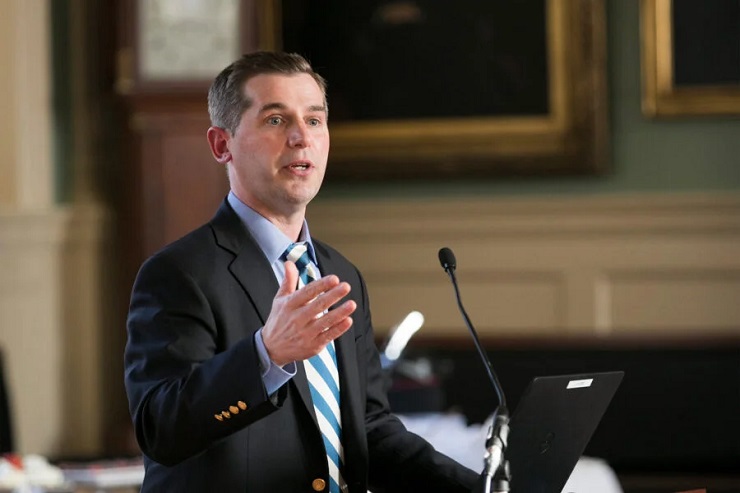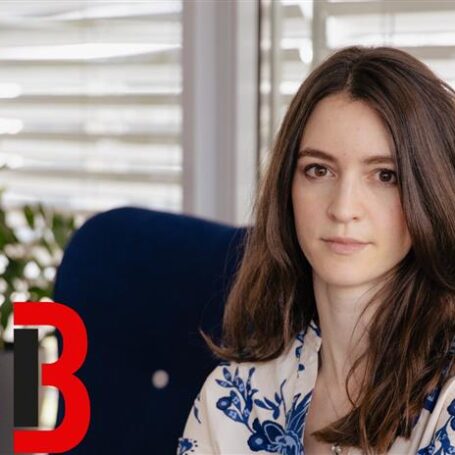We Haven’t Just Suffered During COVID – We’ve Learned

Young people have experienced an array of mental health problems over the past two years. A CDC report published last summer detailed a dramatic increase in adolescents entering emergency departments for a range of reasons, including suicide attempts. (Data for suicides in the same period is incomplete.) These developments led the American Academy of Pediatrics, American Academy of Child and Adolescent Psychiatry, and Children’s Hospital Association to declare a national emergency in youth mental health. In December, U.S. Surgeon General Vivek Murthy released an advisory on protecting youth mental health.
Matthew K. Nock, the Edgar Pierce Professor of Psychology at Harvard University and a research scientist at Massachusetts General Hospital and Boston Children’s Hospital, studies suicide and other forms of self-harm. He spoke to the Harvard Gazette about recent findings in the field and what treatment might look like in a post-pandemic world. The interview was edited for clarity and length.
Harvard Gazette: There has been significant alarm about the rise in attempted suicide by young people in the United States. What are some of the contributing factors?
Matthew Nock: Adolescence is a period when we see a dramatic increase in suicidal thoughts and behaviors in general. Rates of suicidal thinking and hospitalizations for suicidal thinking appear to have increased during the pandemic. A major factor that affects youth more than adults is a general lack of understanding of treatment options. A lot of kids don’t know what mental health treatment is, so they don’t know where to turn. Also, if they’re not able to access care at school or otherwise during the pandemic, their depression, anxiety, and suicidal thinking may persist or increase. Children and adolescents are also less likely to be able to identify evidence-based treatments. Another possible factor is the greater uncertainty and lack of autonomy regarding what’s happening for kids: they’ve been in school, out of school, able to connect in person, then not. The pandemic also has disrupted activities like athletics and clubs, leading to more isolation. To be clear, we should make these changes to decrease the spread of the virus, but we also know that these types of disruptions can be quite difficult for some kids.

Gazette: How much of a factor is social media use?
Nock: Young folks use social media very differently than adults do. We’ve done some research in our lab, led by doctoral graduate Emily Weinstein, on youth uses of social media and found that many kids use social media to connect and to learn skills on how to decrease anxiety, to deal with stress, how to get and give support. But there are also negative uses, including around social comparison and bullying. And some kids use social media to learn about self-injury, alcohol use, and substance use.
Gazette: What are some possible responses?
Nock: I think we can teach adolescents how to use social media more effectively with more of a social media hygiene approach that focuses on ways to get the most out of the tool. A 40-something like me telling my adolescent children how to use social media would be corny and uncool, but we know that there are helpful and not so helpful ways of using social media, and we need to get more savvy about how kids are using social media to help them use it in more healthy ways. It’s similar to teaching them about how to interact with movies, TV, and video games.
Gazette: More broadly, are there new interventions that show promise for treating mental health issues in young people?
Nock: We as professionals need to do a much better job of making good, evidence-based treatments readily available to everyone, and helping people — youth and adults — distinguish helpful from not-so-helpful approaches.
Research from my colleague John Weisz and his trainees shows success in single-session interventions for young people dealing with anxiety and depression. There’s also a big movement to develop precision treatments for people based on a constellation of factors and treatment options. Ronald Kessler [McNeil Family Professor of Health Care Policy at Harvard Medical School] and others have conducted studies suggesting that if we get that treatment matching right, we can really boost the effects of our interventions. We can also guide people toward more conscious self-care: eating well, sleeping regularly, getting regular exercise, and having social interactions.
Gazette: What are some of the treatment lessons of the COVID era?
Nock: For youth and adults, we have learned that a range of e-health and telehealth approaches used during the pandemic can be very helpful given people’s isolation and need for care. Clinicians have been seeing patients virtually across state lines, which improves access to care for so many people. I’d love to see insurance companies continue to reimburse for telehealth, e-health, and other remote forms of treatment. These digital avenues help people to not miss their appointments and get the care they need.
Using single-session interventions and precision treatments that are tailored to a person’s needs, and understanding the efficacy of digital treatments like virtual therapy or mental health apps would be a really positive thing to come out of the pandemic. We also need research testing how these digital treatments work, and we can use that data to figure out how to best tailor treatment to the person.
Gazette: We seem to have reached a turning point in the pandemic. What are you most optimistic about as we look toward the spring
Nock: An important piece of this experience is human resilience. I think about our students who have gone through so many stressors, from quickly moving home, to remote schooling, to being back on campus, isolating, then not. It’s a lot of change and yet our students continue to do really well, by and large. I’m proud of how well our students, and our campus, have done throughout a very difficult two years. For me, this experience has highlighted the importance of community in all its forms. I’m really looking forward to seeing everyone back on campus and to continuing to work together to build a stronger community.




















































































